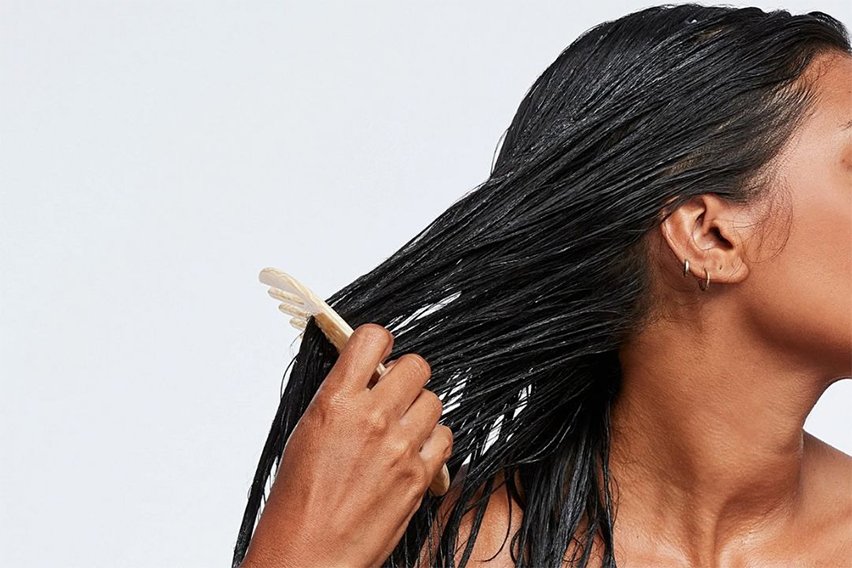
Everyone has had a bad hair day, but let’s
hear some excitement for those of us who have had a bad hair day, month, year,
or decade! Whether you spent your childhood with a FAB (if you know, you know)
or you’ve dedicated the last few years of your life to battling the nightmare
combination of greasy roots and dry ends, hair is one of those parts of your
beauty A routine that is incredibly difficult to implement. Sometimes there may
even be a tried-and-true ritual in your routine that’s secretly causing problems
with your locks—after all, all hair is different, and wrapping a saran-wrapped
hair mask on your head overnight may not work for you as well as for you that
one TikToker.
Given the multitude of myths and misconceptions surrounding hair care, we decided to get to the bottom of the seemingly endless mystery of what makes a good hair day and turn to the experts. Helen Reavey is a certified trichologist, celebrity hairstylist, hair loss specialist and founder of hair care brand Act + Acre. Her tips on how to improve your hair care routine once and for all have therefore been tested many times. If you’ve always felt like you’re just doing something wrong with your hair care, this is for you. Here are the six most common hair mistakes you’re making, according to an expert—and how to fix them.
As a trichologist, Reavey spends a lot of time getting to the root of hair problems (pun intended), which often means they start at the scalp. The most common hair mistake people make in their eyes? They wash their hair when they should be washing their scalp. She explained that the buildup is actually on the scalp and that the hair strands don’t need a thorough cleanse on wash day; Instead, you should work on cleansing your scalp to prevent oiliness and promote healthy growth.
“Wash with lukewarm water and cleanse twice with a gentle shampoo,” recommends Reavey. “It’s important to emulsify the product, double cleanse, and concentrate the product on the scalp and back of the head.” Are you shocked that you’ve been washing your hair incorrectly all this time? I get it—after all, nothing in a beauty routine seems as intuitive as washing your hair, and TV and commercials have taught us to lather our hair from root to tip. Make sure you focus on scrubbing your scalp rather than dragging tons of product through your hair—every strand will thank you.
If you’re an oily roots girl like me, you’ve definitely heard of it, but for those who don’t, here’s a quick explanation. With hair training, you try to “train” your hair to produce less oil by washing it less often. The idea behind this is that you can reduce your scalp’s oil production by separating hair washes as much as possible. This is one of those hair hacks that might be completely viral, but Reavey says it’s a big myth. “Oil production is actually determined by factors like age, hormones, silicone deposits, and more,” says Reavey. “If you’re struggling with excessive oil production and greasy hair, hair training can actually make the condition much worse! You can’t teach your scalp to produce less oil by washing it less.”
There’s a simple solution to this mistake: just don’t try to train your hair. However, if you’re struggling with excess oil and buildup on your scalp, Reavey has some tips that actually help. She primarily recommends double cleansing with every wash using a sulfate- and synthetic-free shampoo. “I recommend double cleansing because the first cleanse removes product buildup while the second wash actually cleanses the scalp,” says Reavey.
On the other side of the hair training spectrum are scalp peels. Think of scalp scrubs as a physical exfoliation for the top of your head. But just as we know that over-exfoliation can harm the skin, it can also harm the scalp. “Physical peels can cause microtears on the scalp, leading to a higher risk of irritation and infection,” says Reavey. You could mone that shedding dead skin from the scalp would promote hair growth, but according to Reavey, it actually increases the risk of the scalp becoming inflamed or infected.
Luckily, if you’re interested in exfoliating your scalp, there are products that can remove dead skin without the risk of microtears. Reavey recommends adding a weekly scalp treatment to your routine, such as a detox oil or chemical peel. According to her, these products “remove debris, excess oil and dead skin from the scalp, leaving it balanced and clean.”
Every now and then, the internet gets excited about eliminating a certain chemical or product from your routine… and then everyone forgets about the cleanse a few months later. Silicones are one of those products that we may have previously looked for in our hair products, but didn’t make a routine of removing them from our wash days. “Although silicones are used to lock in moisture, they often build up on the scalp and hair follicles, causing greasiness, irritation, inflammation, and more,” warns Reavey. There’s a quick solution to this mistake: just check your hair products for silicones – they could just be the insidious factor preventing you from having the best hair day of your life.
Revlon brush users, I know you knew this one was coming. Applying too much heat to your hair is simply not the way to happier, healthier hair. “Using heat on damaged hair exacerbates existing problems by stripping moisture from the scalp, weakening the hair’s protein bonds, and increasing damage to hair strands,” says Reavey. “Damaged hair already lacks the resilience needed to withstand external stress, and excessive heat leads to increased breakage, split ends, frizz, brittleness, and more.”
Of course, giving up the curling iron can be a big challenge, but if you want to improve your hair health, you should heat your hair as rarely as possible. If you’re struggling with damage and dryness, Reavey recommends using a conditioner, leave-in conditioner, and hair oil to repair dryness and split ends and smooth frizz.
Reavey’s final tip for those who constantly struggle with their hair care routine? Add a scalp treatment to your weekly routine (as long as it’s not a scalp peel). Remember the commercial from the 2010s in which Heidi Klum compared the scalp to the root of a tree? Reavey expressed the exact same opinion. “Use a gentle treatment once a week before showering to break down oil and remove product buildup from the scalp,” she says. “Plus, I don’t go a day without using a strengthening scalp serum.” Reavey recommends also trying a scalp gua sha to help the product absorb into the scalp better. In all likelihood, once you give your scalp the care it deserves, your hair will benefit.





